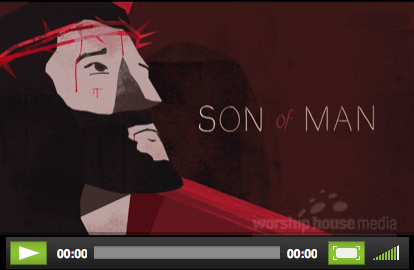How to Write A Sermon – 7 Steps to A Memorable Message (Step 4)
Writing a sermon is similar to building a house. There are 7 stages the construction of a message must go through before it is finished.
We have already covered the first three steps in previous posts:
Step 1: Pray – Connect to the power source.
Step 2: Study Scripture – Lay the foundation.
Step 3: Big Idea – Build the Frame
Moving on to step 4.
Step 4: Design Center

My wife’s favorite step to building our first home was the day we went to visit the design center. The design center features a nearly unlimited selection of tile, carpet, countertops, cabinets, and more. It was our job to walk through and pick out all of our favorite options for our new house.
Large tile, small tile, or no wood floors? Granite, Corian, or laminate countertops? What kind of cabinets? What light fixtures? White, brown, or blue carpet? Great, you like brown carpet, here are 47 different shades to choose from!
The design center took forever. I got a headache. My wife loved every second. But we finally walked away with exactly what we wanted.
The layout of the house was already set, but the choices at the design center were going to change everything about the overall look and feel of the house. It paid to find exactly what worked best for us.
How does this apply to learning how to write a sermon?
Step 4 in writing a sermon is to go to the design center – pick out the illustrations. Finding illustrations for a sermon is similar to picking the design for a house. Illustrations affect the overall look and feel of your message. There are near unlimited options, but you must painstakingly choose what works best for your message.
Most people think of illustrations as stories, but they could be any creative element – videos, pictures, props, art, or music. An illustration is anything that helps you illustrate your message. If you look up “illustrate” in a thesaurus, you will see that a synonym of the word is “decorate.”
Although illustrations will not change the frame of the message (the Big Idea from step 3) they decorate the message. They make all the difference in the world in how the audience connects with and feels about the sermon.
A good illustration compliments the sermon. It is a beautiful work of art that provides clarity, inspires action, or brings the message to life.
A bad illustration clashes with the sermon. It is an eye sore that confuses, distracts, or lessens the impact of the message.
How to Find the Best Sermon Illustrations
Look inward before outward.
Before you immediately jump online and Google “sermon illustrations.” Think about your personal stories and life experiences. What in your life past or present can relate positively or negatively to the message?
Need help? I highly recommend doing a personal story mind map. This is a huge way to dig thousands of illustrations from your life.
Collect more illustration than you need.
Don’t settle on the first illustration you think of or find in a book or on the internet. Collect more than you need. Gather as many good ones as you can and don’t look back. Once you have collected all that you can find, the best ones for this particular sermon will rise to the top.
Think outside the box.
As I said above, illustrations are more than stories. Ask: Are there videos? Are there songs about this? Are there any photos or graphics that could help? Could you draw it on a whiteboard? Are there any current events that relate? Are there any props you could use to demonstrate? Any quotes? Could you create your own parable to help?
Find illustrations long before you need them.
Treat life like an illustration scavenger hunt. Always have a notebook or app ready to capture any illustrations you see. Take pictures of things that are interesting. Keep a personal journal of interesting events of the week and what you learned from them. Save illustrations from articles, newspapers and books as you read them. Write down funny things your kids say. Record interesting things from your life.
Always be looking. Always be collecting.
Keep all your sermon illustrations in a database. I personally use Evernote to capture and catalogue every illustration I come across (this article explains how).
Why do all this? Because when you have a sermon on anger or some other topic, you already have a reservoir of great illustrations waiting to be used. This is a huge time saver! You don’t have to go back and try to remember what book you read something in or what website you saw that story on. It is all there and easy to search through.
Know what makes illustrations work.
You have to know your audience. You have to really understand who they are and what they care about. Then you can design your illustrations to build common ground between you and them. Read this article for more details and a great diagram to show which illustrations are effective and which aren’t.
Practice your delivery.
Sometimes an illustration sounds powerful in your head, but falls flat out of your mouth. Sometimes the problem story, but many times the problem is the delivery. Maybe you rushed through it. Maybe you didn’t pause effectively. Maybe your gestures didn’t match what you were saying.
This is especially important with telling jokes. I cannot tell you the number of times I said something I thought was hilarious only to be greeted with crickets from the audience. Sometimes it just wasn’t funny. But many times it was how I delivered the joke.
Work on it. The more you practice the better you will get, and the more powerful your illustrations will be.
What’s Next?
At this point you have prayed to connected to the power source (step 1). You have studied scripture to lay the foundation (step 2). You have found the Big Idea that will be the framework for your message (step 3). You have picked the illustrations to form the design (step 4).
Onward to step 5 – finish the build. (coming soon…)
[If you haven’t noticed, these steps are similar to my 7 Step Sermon Prep Checklist that you can get FREE here]
This article is part of the Preaching 101 series. More from this series:
- Preaching 101 – Back to Basics
- What Does The Bible Say About Preaching?
- Before You Practice Preaching, Practice What You Preach
- How to Write a Sermon – 7 Steps to a Memorable Message (Step 1)
- How to Write a Sermon – 7 Steps to a Memorable Message (Step 2)
- How to Write a Sermon – 7 Steps to a Memorable Message (Step 3)





